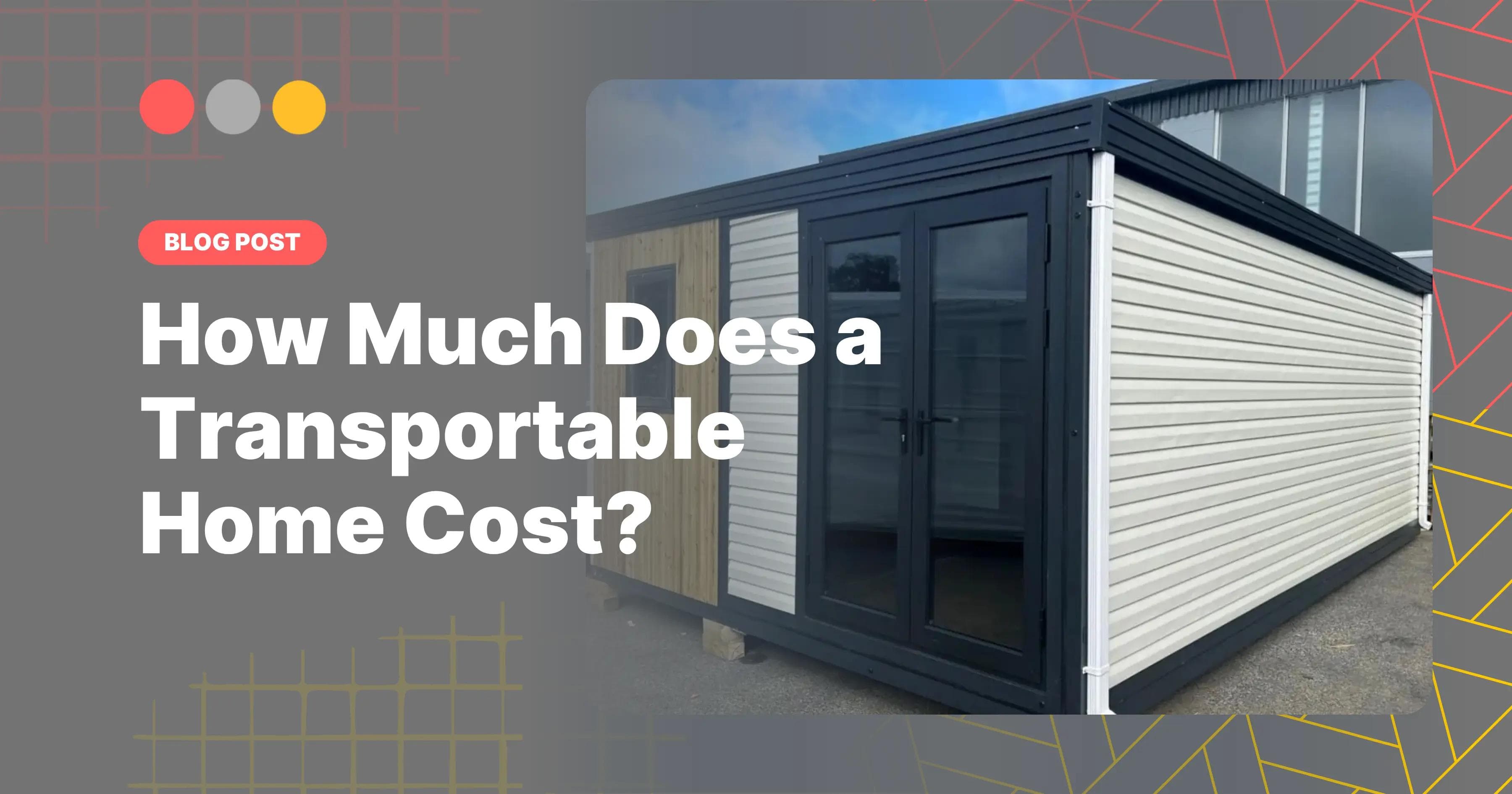Pros and Cons of Prefab Homes
For many people, owning a home is a lifelong dream. What has changed over time is the way we build them. Prefabricated houses are put together from factory‑made parts — modules, panels, or kits —
Portable Building Specialists
027 242 9544 - Christchurch
Mobile houses are gaining popularity among customers who want to own a house more quickly and, in many cases, at a lower cost. Unlike conventional buildings, these homes come as prefabricated packages

Mobile houses are gaining popularity among customers who want to own a house more quickly and, in many cases, at a lower cost. Unlike conventional buildings, these homes come as prefabricated packages ready for assembly, which significantly reduces construction time and eliminates much of the stress associated with traditional homebuilding. They are used for various reasons, as family homes, vacation homes, or even to rent. Understanding the true cost of a transportable home and the variables that can influence the final cost is crucial before choosing this option.
If you’re wondering how much transportable homes cost, the answer varies based on several key factors. The biggest part of the cost is the home itself — its size, the materials used, and the level of finish you select. Obviously, a simple, smaller unit with basic fittings will cost less than a larger home with high-end features and custom design.
Delivery and installation also affect the final cost. Many people also wonder: how much does it cost to move a transportable house? Delivery typically starts at NZD $650 around the city and increases depending on distance and access conditions. The farther the house needs to travel and the more complex the site, the higher these costs can be. Setting up the foundation, cranes for lifting, and preparing the site all play a role.
And then there's the connection to utilities. A visible impact on the final price can be made by the plumbing and electricity systems, heating or cooling systems, and interior finish including flooring, kitchen, and bathroom fittings.
The price can even increase due to the inclusion of additional options. Improvements such as adding a deck or veranda, selecting energy-saving options, or installing smart-home systems are optional from a comfort standpoint, but they increase the initial cost.
The cost of a transportable home can vary a lot, depending on its size and the level of finish. Budget-friendly models, such as Foldable, Tiny, or basic Kitsets, are usually the smallest and simplest, typically starting at around the price of a small apartment –for example, a Foldable Pod (14.5 m²) is priced at NZD $5,999 . These are great for basic living or as holiday homes but come with minimal design choices.
Standard models, like Prefabs, 1-Bedroom, or 2-Bedroom options, sit in the middle range — they offer more space, better materials, and a wider choice of layouts. For instance, a 26 m² Deluxe Cabin is available for NZD $36,000, while a 2-Bedroom Unit (33 m²) starts at around NZD $34,500. For many families, this is the sweet spot where comfort meets reasonable pricing.
Premium or custom-built options, including Granny Flats, Self Contained, and Custom designs, are at the higher end. These homes feature larger floor plans, high-quality finishes, energy-efficient systems, and sometimes unique architectural designs. For example, a 39 m² Deluxe Cabin with enhanced features can cost up to NZD $48,500. Naturally, the more customization you choose, the higher the overall cost.
One of the biggest advantages of a transportable home is the cost. In most cases, it’s noticeably cheaper than building a traditional house from scratch, especially if you choose a standard design. Construction time is another huge plus — since most of the work is done in a factory, the house can be ready and installed in just a few weeks, which is perfect for those who don’t want to wait months or even years. It’s also less stressful because you’re dealing with a controlled production process rather than unpredictable on-site construction.
Nonetheless, it has its trade-offs. You may also incur additional costs to deliver, install, and connect to water, electricity and so on that are not necessarily included in the original cost. Limitations can also be set on the local regulations, as local zoning laws may restrict the size or placement of transportable homes, and in some instances, special permits may be required. Lastly, modern designs are nice, but you may not be able to customize it as much as you would when you build a house from the ground up.
Choosing a transportable home can be a smart and practical solution for many people. It offers a faster and more affordable way to own a comfortable living space, whether it’s for permanent living, a holiday retreat, or even as an investment property. While there are additional costs for delivery and setup, and some limitations with local regulations, the overall benefits — especially the reduced construction time and lower overall price compared to a traditional build — make it an appealing option. If you value convenience, cost-effectiveness, and a quicker move-in time, a transportable home could be the right choice for you.
For many people, owning a home is a lifelong dream. What has changed over time is the way we build them. Prefabricated houses are put together from factory‑made parts — modules, panels, or kits —
Portable Building Specialists
Cabin viewings are by appointment only
Loading reviews...
Christchurch
In-person visits are by appointment only
south@portahomes.co.nz
Office: 70 Maunsell Street, Woolston
Showroom: 466 Yaldhurst Road, Yaldhurst
Mon-Fri 8AM to 4PM